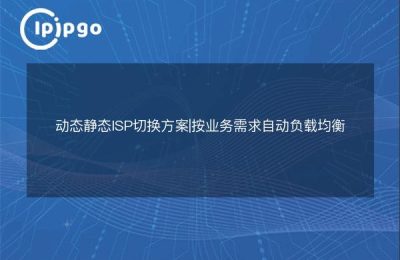
Obtaining and using static domestic IP proxies
In today's era of rapid Internet development, Internet security has become a topic of great concern. Many people want to protect their private information when using the Internet, especially when visiting domestic websites. And getting a static domestic IP proxy becomes a very effective way. So, how to get and use static domestic IP proxy? This article will give you a detailed introduction.
Get static domestic IP proxy
There are two common ways to get a static domestic IP proxy: buying and building.
1. Purchase a static domestic IP proxy
In the market, there are many service providers that offer static domestic IP proxies, and you can get static domestic IP proxies by purchasing the services they offer. These service providers usually offer a wide range of IP proxies for different countries and regions, and you can choose the right one according to your needs.
The process of buying a static domestic IP proxy is very simple: first, choose the IP proxy you want on the website offering the service and pay for it as required. Subsequently, you will be given an IP address and port number of the proxy server, which you can then use to access it.
2. Build a static domestic IP proxy
If you are more familiar with technology, you can also consider building a static domestic IP proxy server yourself. This not only allows you to fully grasp the flow of your network data, but also to adjust and optimize according to actual needs.
The process of building a static domestic IP proxy server can be complicated, but by following the steps below, you will be able to build it successfully:
1. Choose the right cloud server provider, such as Amazon Web Services (AWS) or Google Cloud Platform (GCP);
2. Create a VM instance and select a suitable region, e.g., USA, Europe, etc;
3. Install the appropriate proxy software, such as ipipgo, Squid, etc., in the virtual machine instance;
4. Configure the proxy software and set parameters such as user name, password and listening port;
5. Start the proxy software and test it to ensure that the proxy server is working properly.
Using a static domestic IP proxy
After getting a static domestic IP proxy, you can apply it in various scenarios, such as accessing domestic websites, data crawling and so on.
1. Access to national websites
By using a static domestic IP proxy, you can access foreign websites that have restricted access to domestic IPs. For example, you can get faster access speeds, solve geographical restrictions and other problems.
Code example using a static domestic IP proxy:
import requests
# Set the proxy server address and port number
proxy = {
'http': 'http://ip_address:port',
'https': 'http://ip_address:port'
}
# sends the request using a proxy server
response = requests.get(url, proxies=proxy)
# Processes the response data2. Data crawling
Static domestic IP proxies can also come in handy if you need to get data from foreign websites. Using a static domestic IP proxy allows you to implement features such as anonymous crawling and bypassing crawler identification.
Code example using a static domestic IP proxy:
import requests
# Set the proxy server address and port number
proxy = {
'http': 'http://ip_address:port',
'https': 'http://ip_address:port'
}
# sends the request using a proxy server
response = requests.get(url, proxies=proxy, headers=headers)
# Processes the response dataWith the above two examples, you can see that using a static domestic IP proxy is very simple, you just need to set the proxy server address and port number.
summarize
The acquisition and use of static domestic IP proxies is of great significance for privacy protection and access to domestic resources. This article introduces two ways to get a static domestic IP proxy: buying and building, and provides corresponding code examples. We hope this article will help you understand and apply static domestic IP proxies.








